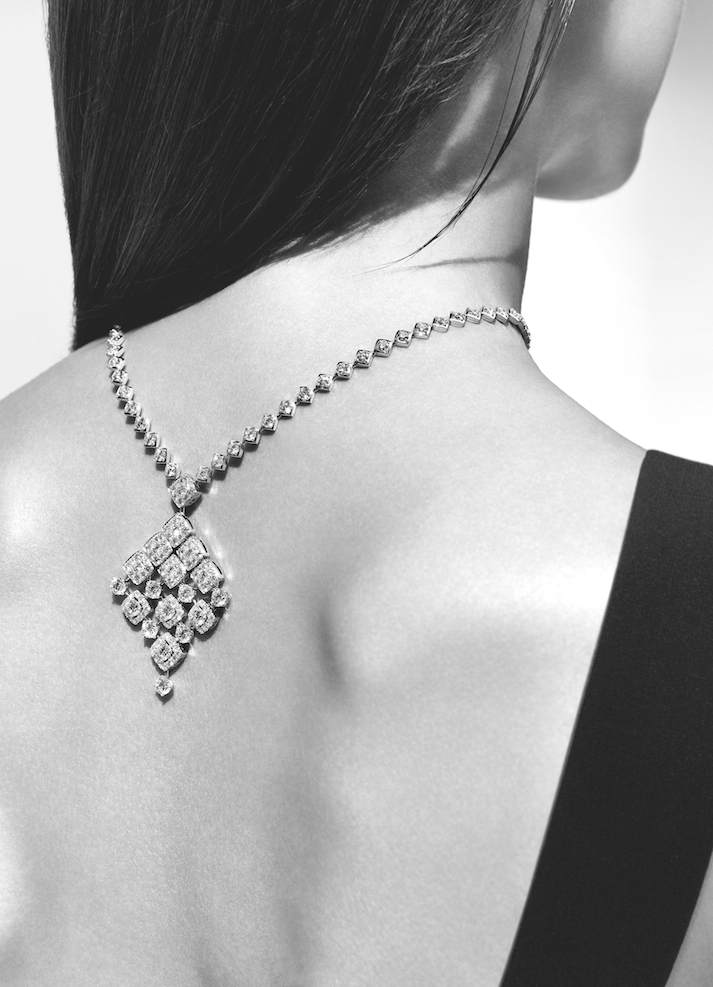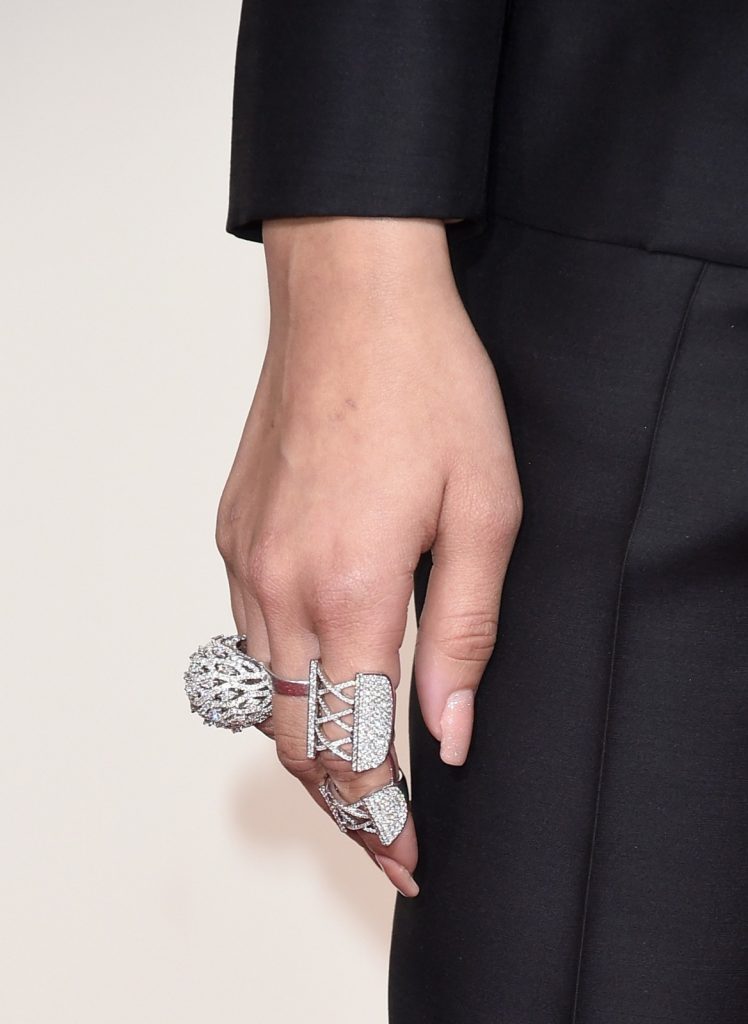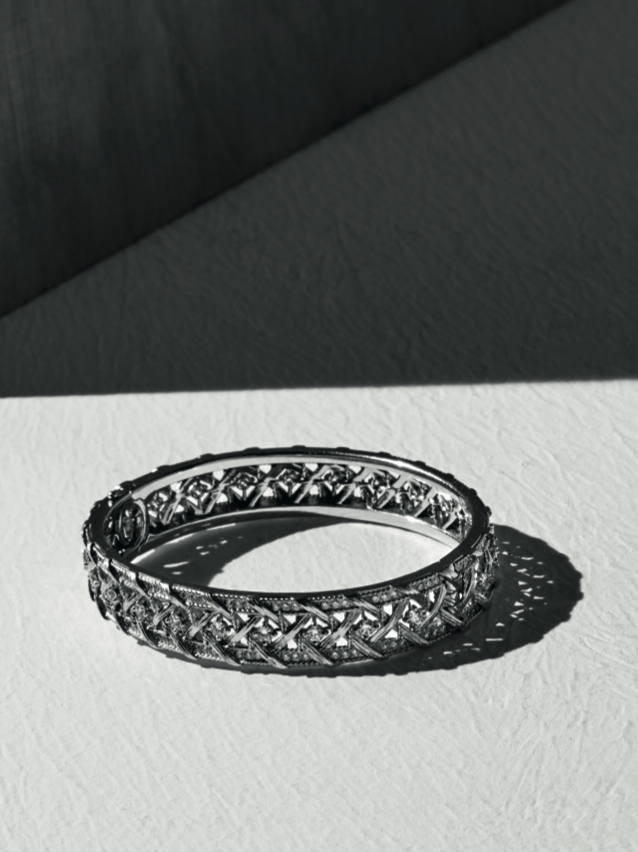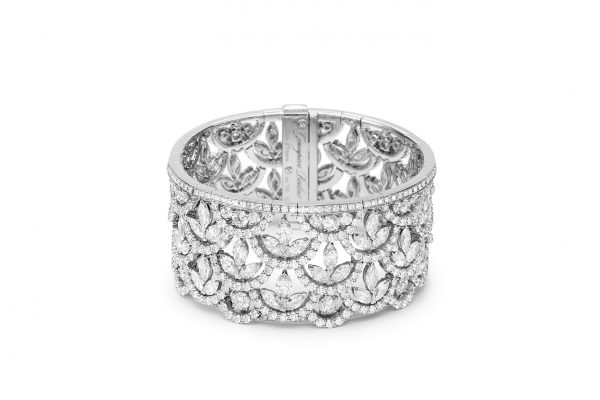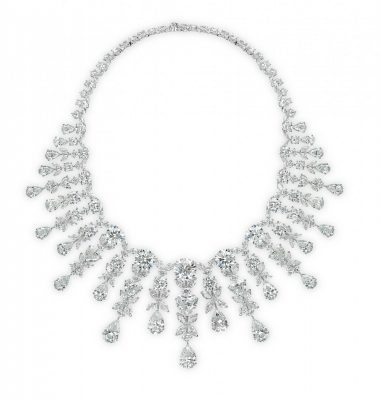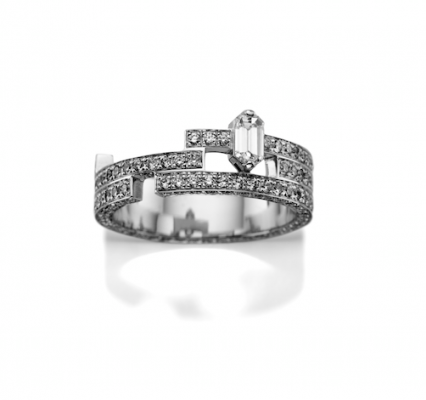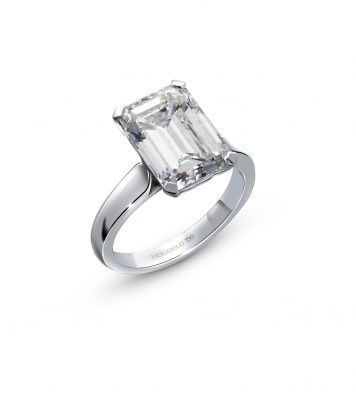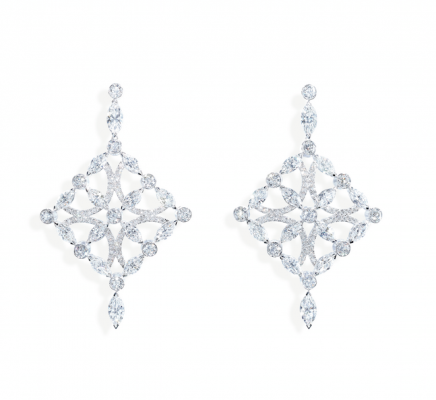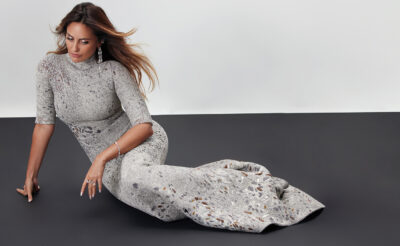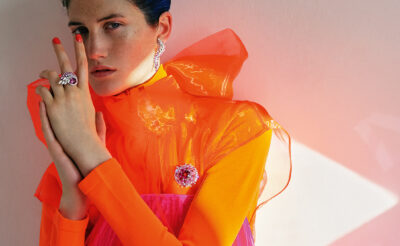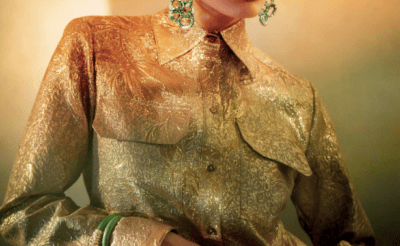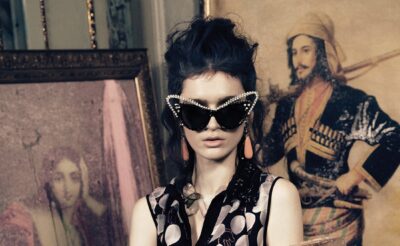Unique, rare and precious. In our search for that exceptional piece of jewellery for life, could we be witnessing the death of the traditional diamond?
Whispered by Marilyn Monroe, ‘diamonds are a girl’s best friend’ is a notion ingrained in our social consciousness. Whether an engagement, the birth of a child or to mark the passing of time, some of the biggest moments in a woman’s life are celebrated with the gift of a sparkling fragment of pure carbon. But, it wasn’t always so. Diamonds weren’t popular among the masses until, after two decades of slow diamond sales, De Beers devised a winning advertising campaign in the Thirties, together with some savvy celebrity placements that convinced the public that A Diamond Is Forever. Diamond sales rose 55 percent in four years and the jewel morphed into the ultimate expression of love. Like a tree falling in a remote forest, does an engagement without a diamond ring really exist? “Diamonds are certainly unique stones in their transparency and in the way they catch light under different circumstances,” says Charlotte Dauphin de la Rochefoucauld, designer at Maison Dauphin, “but, they also symbolise eternity.” Yet, as the modern customer demands variety and individualism in every aspect of her life (as well as value for her money), she is turning to customised settings, vintage designs and colourful gems to distinguish herself. Is the diamond as much a vintage relic as the Hollywood golden age that gave it life?
Falling demand for diamonds in markets such as the United States and China has put pressure on the $80 billion dollar industry in recent years, with prices down by nearly 25 percent in 2015 according to consulting firm Bain & Company. Mine owners like De Beers have been unable to prevent diamond prices from dropping below where they were a decade ago (although prices rose for the first time since 2008 just last month). Whether a sign of a longer-term global trend of diamonds losing their allure or simply a fluctuation driven by economic factors, inflated expectations of the growth in demand for diamonds has not helped, reports Bain.
“There will always be demand for diamonds,” says Fred Mouawad, guardian of the Mouawad diamond division and one of the richest diamond business owners in the world, “but the challenge in sustaining this demand lies in creating something that is more than simply jewellery. It is about creating experiences, moments of joy, and excellence of craftsmanship that make an item worth cherishing for years to come.” In emerging markets, in which overall wealth continues to rise, the diamond is faring better as a traditional marker of affluence. “In the Middle East, we see consumption rising,” says Mouawad. “Of course, on a global level, there will always be slight fluctuations as a number of markets such as China have the ability to impact global figures. In the Middle East, I think that the outlook for diamond jewellery consumption is positive and will continue to be so.”
The rising popularity of coloured gemstones means that the diamond is no longer the only big rock in town. The red carpet is bedazzled with bold jewellery: Naomi Watts in art deco inspired Anna Hu Haute Joaillerie 50 carat sapphire earrings at the 2015 Oscars, Saoirse Ronan at the BAFTAs this year in a candy store confection of multi-coloured sapphires by Chopard, or Jessica Chastain in Piaget rubies at the Met Gala. The Duchess of Cambridge sparked demand for a new wave of gemstone engagement rings with her 18-carat Ceylon sapphire ring, probably the most famous engagement ring in the world, which belonged to the late Princess Diana. “Coloured gemstones have been around for a very long time,” reflects Rupak Sen, Gemfields’ regional marketing director for Asia and the Middle East. “It was somewhat forgotten about since the Forties, but the last few years have seen a complete resurgence in the appetite for emeralds, rubies and sapphires. Colour makes people stop and take notice. The next decade is going to be the decade of colour. Consumers today want to create a statement with their jewellery, and what better way to make that statement than by wearing an emerald, which is 20 times rarer than a diamond?”
There will always be demand for diamonds but the challenge in sustaining this demand lies in creating something that is more than simply jewellery.
Fred Mouawad
It is just this scarcity that allows gemstones to mount a challenge to the diamond. Brightly hued stones offer a point of difference that sets them apart from the familiar icy brilliance of the diamond. “The colour stones are very high end and very rare. It is the rarity of the stones that makes them more valuable,” notes Sen. “No two stones are the same. Because of their rarity, the prices of these stones continue to increase every year. These stones are finite in number. The mines producing them will last maybe for another 25-odd years. After that (and if no new mines are found) one will never be able to be a firsthand owner of a gemstone.”
Rare, expensive and in limited supply. Sounds familiar. But, history has a habit of repeating itself. “I think it’s interesting to remember that from the 18th century onwards, white jewellery periods have always tended to alternate with yellow gold and coloured jewellery periods,” notes jewellery historian Amanda Triossi. “For example, in the Thirties, diamond jewels set in platinum were all the rage; in the Forties, yellow gold and coloured gems were extremely fashionable and again in the Fifties, diamonds came to the forefront. The change from colour to diamonds and vice versa is dictated by different factors, but on a very macro scale, I think that the change is often prompted by fashion. The Nineties’ minimalistic black and white called for equally styled monochromatic white jewels, while nowadays, the fashion for brighter coloured fabrics prompts jewellers to follow suit – hence the trend for coloured gems which tend to be mounted in pink gold. Trends for diamond-set jewels versus those with coloured jewels rotate or oscillate like a pendulum.”
Of course, just as a woman’s jewellery box contains trinkets that represent different aspects of her personality, so, too, do coloured gemstones and diamonds co-exist, frequently in the same piece. “I don’t see the diamond being overtaken by another stone, but I do see greater interest in gems such as sapphires, rubies, emeralds,” concedes Mouawad. “And, it’s worth noting that these stones are seen at their best when paired with diamonds.” The diamond, even when not centre stage, plays a crucial supporting role that enhances the reflective beauty of a tonal gem. “I don’t think there is a race happening here,” urges Sen. “Diamonds, gold, emeralds, rubies and sapphires will all coexist. Every time we sell an emerald or a ruby piece, diamonds are also sold along with it, as the emerald becomes the centre stone and diamonds surround it, and the metal used is gold. They complement each other and that’s how it will always be.”
Looking for a less conspicuous display of wealth than the traditional princess-cut whopper (and the constant judgement of the four c’s), millennials are seeking new settings, sizes and designs for their statement pieces, prioritising ethically sourced stones. Plain gold bands, stacked eternity rings or multi-finger designs grace the hands of chic women whose minimalist tendencies extend to their jewellery. As proposals and wedding ceremonies become more authentic and less formal, the rules of the diamond game are changing. Couples often design bespoke pieces for each other during their engagement, while single women are dispensing with the outdated notion that they should wait to be gifted a diamond by picking out ‘right hand rings’ for themselves in the interests of fashion, investment or simply to subvert tradition. “Creativity and innovation in the structure are the basics for ensuring a contemporary vision of diamonds,” explains de la Rochefoucauld, whose Disruptive collection overthrows the traditions of the diamond ring as a true expression of modernism. “It allows reinvention in the way they are emphasised, but also perceived by a new generation. So, it speaks to a contemporary society, but also for it. This dialectic is crucial in the understanding of this evolution, because all the arts and crafts push society’s boundaries, but are also the result of it. As long as there is beauty and harmony in the creation, I feel it becomes universal.”
As diamonds and gemstones form a creative partnership in certain pieces, so can traditionalists and modernists find new perspectives on the diamond. “I believe that elaborate settings can counterbalance the size of a given diamond, hence the resulting ring might be more ‘flash than cash’,” notes Triossi, “it may have a great look, but not be of great substance, which for some markets is very appealing”. “Women are definitely looking for new and different ways to express their personality through their engagement rings,” confirms Mouawad. “I don’t actually see this ever eclipsing the popularity of classic styles though. Engagements retain a sense of the traditional, even in modern times. It is important to know how to interpret something classic, but give it a contemporary twist.”
Of course, it’s not as simplistic as one type of jewellery, or even stone, overtaking another. In the interests of variety, creativity and a diverse choice for each individual consumer, it could never be so, regardless of the prevailing jewellery trend of the moment. “The saying ‘diamonds are forever’ has certainly proved true in the sense that demand remains healthy despite the coming and going of trends,” maintains Mouawad. Whether we are drawn to them by virtue of clever advertising, tradition or aesthetics, diamonds denote play, love, style, and friendship; today, their meaning can be as permanent or fleeting as we choose. “People are now looking for something that is unique not only in the quality of a stone, but also in the creative vision that accompanies it, and to me this is the next level in consumption. This is the real luxury,” says de la Rouchefoucauld. “I create for today’s woman. She is elegant yet not traditional, poetic and feminine yet with strength, imaginative but not fashionable. She is a cultivated and free spirit that goes beyond trends, fashion and above all branding.” The diamond isn’t dead, but it is no longer wedded to forever.
